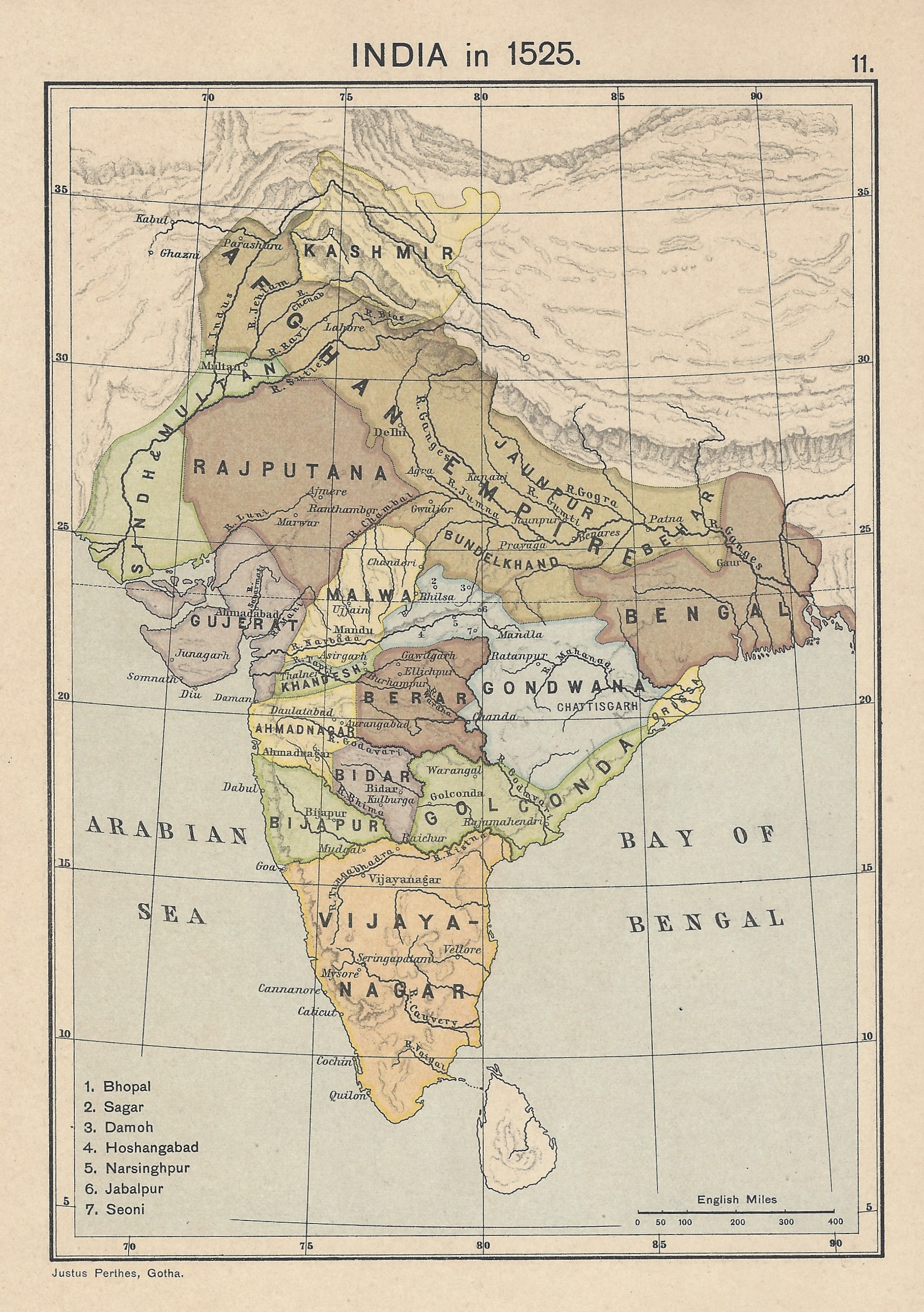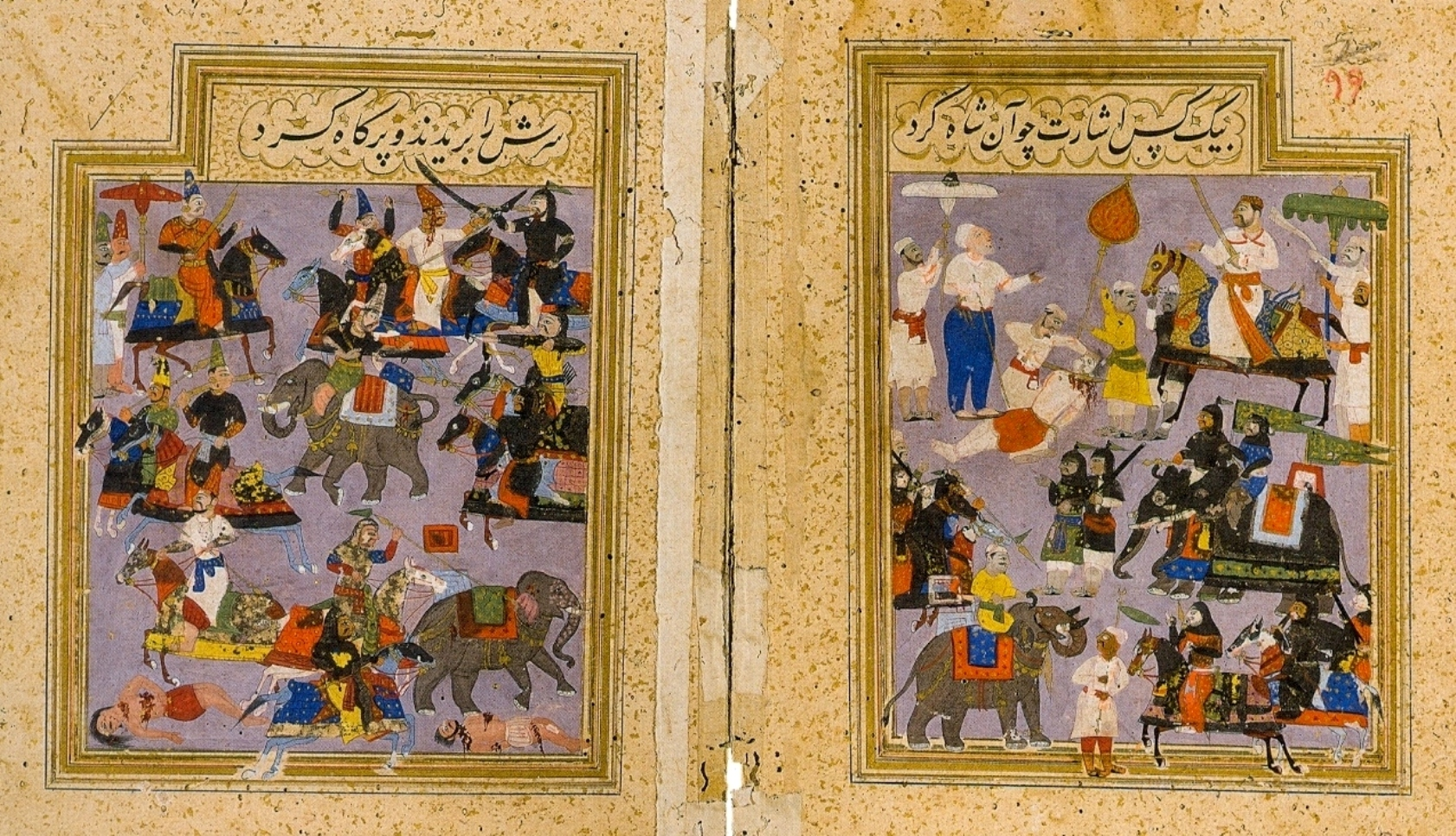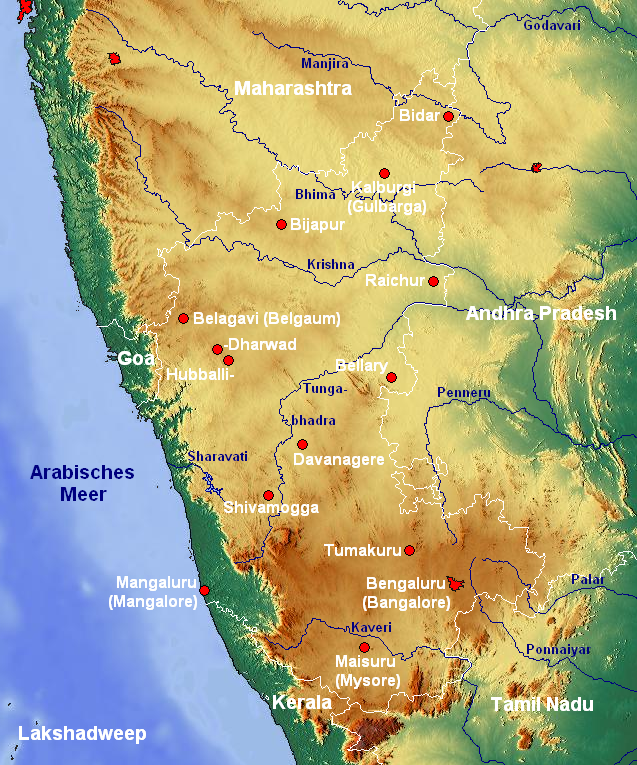|
Bijapur Sultan
The Sultanate of Bijapur was an early modern kingdom in the western Deccan and South India, ruled by the Muslim Adil Shahi (or Adilshahi) dynasty. Bijapur had been a ''taraf'' (province) of the Bahmani Kingdom prior to its independence in 1490 and before the kingdom's political decline in the last quarter of the 15th century. It was one of the Deccan sultanates, the collective name of the kingdom's five successor states. The Sultanate of Bijapur was one of the most powerful states on the Indian Subcontinent at its peak, second to the Mughal Empire which conquered it in 1686 under Aurangzeb. After emigrating to the Bahmani Sultanate, Yusuf Adil Shah rose through the ranks to be appointed governor of the province of Bijapur. In 1490, he created a ''de facto'' independent Bijapur state which became formally independent with the Bahmani collapse in 1518. The Bijapur Sultanate's borders changed considerably throughout its history. Its northern boundary remained relatively stable, st ... [...More Info...] [...Related Items...] OR: [Wikipedia] [Google] [Baidu] |
Bahmani Kingdom
The Bahmani Kingdom or the Bahmani Sultanate was a late medieval Persianate kingdom that ruled the Deccan plateau in India. The first independent Muslim sultanate of the Deccan, the Bahmani Kingdom came to power in 1347 during the rebellion of Ismail Mukh against Muhammad bin Tughlaq, the Sultan of Delhi. Ismail Mukh then abdicated in favour of Zafar Khan, who established the Bahmani Sultanate. The Bahmani Kingdom was perpetually at war with its neighbours, including its rival to the south, the Vijayanagara Empire, which outlasted the sultanate. The Mahmud Gawan Madrasa was created by Mahmud Gawan, the vizier regent who was prime minister of the sultanate from 1466 until his execution in 1481 during a conflict between the foreign (Afaqis) and local (Deccanis) nobility. Bidar Fort was built by Ahmad Shah I (), who relocated the capital to the city of Bidar. Ahmad Shah led campaigns against Vijayanagara and the sultanates of Malwa and Gujarat. His campaign against Vijayanag ... [...More Info...] [...Related Items...] OR: [Wikipedia] [Google] [Baidu] |
Ahmednagar Sultanate
The Ahmadnagar Sultanate was a medieval Marathi Muslim kingdom located in the northwestern Deccan, between the sultanates of Gujarat and Bijapur, ruled by the Nizam Shahi dynasty. It was established when Malik Ahmed, the Bahmani governor of Junnar, after defeating the Bahmani army led by general Jhangir Khan on 28 May 1490, declared independence and established the Ahmadnagar Sultanate. Initially the capital was in the town of Junnar with its fort, later renamed Shivneri. In 1494, the foundation was laid for the new capital Ahmednagar. A land fort called Ahmednagar Qila was the headquarters of the Ahmednagar Sultanate. In 1636 Aurangzeb, then Mughal viceroy of the Deccan, annexed the sultanate to the Mughal Empire. History Establishment Malik Ahmad Nizam Shah I who was the son of Nizam-ul-Mulk Malik Hasan Bahri established the kingdom. His Family were the Kulkarnis of Pathri a town in Marathwada. Either as a result of religious persecution or famine, his ancestors c ... [...More Info...] [...Related Items...] OR: [Wikipedia] [Google] [Baidu] |
Sultanate Of Golconda
The Sultanate of Golconda (; ) was an early modern kingdom in southern India, ruled by the Persianate, Shia Islamic Qutb Shahi dynasty of Turkoman origin. After the decline of the Bahmani Sultanate, the Sultanate of Golconda was established in 1518 by Quli Qutb Shah, as one of the five Deccan sultanates. The kingdom extended from parts of the modern-day Indian states of Karnataka, Andhra Pradesh, Odisha and Telangana. The Golconda sultanate was constantly in conflict with the Adil Shahis and Nizam Shahis, which it shared borders with in the seventeenth century to the west and northwest.C.E. Bosworth, ''The New Islamic Dynasties'', (Columbia University Press, 1996), 328. In 1636, Mughal emperor Shah Jahan forced the Qutb Shahis to recognize Mughal suzerainty and pay periodic tributes. The dynasty came to an end in 1687 during the reign of its seventh sultan Abul Hasan Qutb Shah, when the Mughal ruler Aurangzeb arrested and jailed Abul Hasan for the rest of his life in Daula ... [...More Info...] [...Related Items...] OR: [Wikipedia] [Google] [Baidu] |
Tanjore
Thanjavur (), also known as Thanjai, previously known as Tanjore,#Pletcher, Pletcher 2010, p. 195 is a city in the India, Indian state of Tamil Nadu. It is the 12th biggest city in Tamil Nadu. Thanjavur is an important center of South Indian culture, southern Indian religion, art, and architecture. Most of the Great Living Chola Temples, which are World Heritage Sites, UNESCO World Heritage Monuments, are located in and around Thanjavur. The foremost among these, the Brihadisvara Temple, built by the Chola emperor Rajaraja I, is located in the centre of the city. This temple has one of the largest bull statues (called Nandi) in India carved out of a single granite rock. Thanjavur is also home to Thanjavur painting, Tanjore painting, a painting style unique to the region. Thanjavur is the headquarters of the Thanjavur district, Thanjavur District. The city is an important agricultural centre located in the Cauvery Delta, Kaveri Delta and is known as the ''Rice bowl of Tamil Nadu' ... [...More Info...] [...Related Items...] OR: [Wikipedia] [Google] [Baidu] |
Carnatic Region
The Carnatic region is the peninsular South Indian region between the Eastern Ghats and the Bay of Bengal, in the erstwhile Madras Presidency and in the modern Indian states of Tamil Nadu and southern coastal Andhra Pradesh. During the British era, demarcation was different and the region included current-day Karnataka and the whole region south of the Deccan. Etymology A number of theories exist as to the derivation of the term ''Carnatic'' or ''Karnatic''. According to Bishop Robert Caldwell, in his ''Comparative Grammar of the Dravidian Languages'', the term is derived from ''Kar'', "black", and ''nadu,'' "country", i.e. "the black country", which refers to the black soil prevalent on the plateau of the Southern Deccan. When the English settled on the East Coast, all South India, from the river Krishna to Cape Comorin, was under the rule of a Kanarese dynasty, reigning at Vijayanagar, and was known as the Karnataka Realm. Hence the name "Carnatic" has come to be ... [...More Info...] [...Related Items...] OR: [Wikipedia] [Google] [Baidu] |
Battle Of Talikota
The Battle of Talikota was a watershed battle fought between the Vijayanagara Empire and an alliance of the Deccan sultanates. The battle resulted in the defeat and death of Rama Raya, the ''de facto'' ruler of the Vijayanagara Empire, set forth the collapse of the Vijayanagara polity and reconfigured South Indian and Deccan politics. The specific details of the battle and its immediate aftermath are notoriously difficult to reconstruct in light of the distinctly contrarian narratives present across primary sources. The defeat in this battle is usually blamed on the gap in relative military prowess of the combatants. Orientalist and nationalist historians claimed the battle as part of a clash of civilizations between Hindus and Muslims. Contemporary scholars reject such characterizations as flawed. Background Rama Raya, after his installation of a patrimonial state and emerging as the ruler, adopted a political strategy of benefiting from the internecine warfare among the m ... [...More Info...] [...Related Items...] OR: [Wikipedia] [Google] [Baidu] |
Vijayanagara Empire
The Vijayanagara Empire, also known as the Karnata Kingdom, was a late medieval Hinduism, Hindu empire that ruled much of southern India. It was established in 1336 by the brothers Harihara I and Bukka Raya I of the Sangama dynasty, belonging to the Yadava clan of Lunar dynasty, Chandravamsa lineage. The empire rose to prominence as a culmination of attempts by the southern powers to ward off Muslim invasions of India, Muslim invasions by the end of the 13th century. At its peak in the early 16th century under Krishnadevaraya, it subjugated almost all of Southern India's ruling dynasties and pushed the Deccan sultanates beyond the Tungabhadra River, Tungabhadra-Krishna River, Krishna River doab region, in addition to annexing the Gajapati Empire (Odisha) up to the Krishna River, becoming one of the most prominent states in India. The empire's territory covered most of the lands of the modern-day Indian states of Karnataka, Andhra Pradesh, Tamil Nadu, Kerala, Goa, and some pa ... [...More Info...] [...Related Items...] OR: [Wikipedia] [Google] [Baidu] |
Raichur Doab
The Raichur Doab is a Doab, in this case the triangular region of land in the southern Indian states of Telangana and Karnataka lying between the Krishna River and its tributary, the Tungabhadra River. The doab is named for the town of Raichur in the Raichur District. The Raichur Doab is considered to be very fertile because of the sediments carried by Krishna and Tungabhadra rivers. The doab includes Raichur district and Koppal district in Karnataka, and Gadwal district in Telangana. Some areas of Raichur doab also called as Nadigadda region became a part of Telangana during Andhra Pradesh Reorganisation Act in 2014.Those areas are Gadwal, Alampur and Maganoor. Gadwal is one of the 31 districts of Telangana State. Resources Hatti Gold Mines: Situated in Hatti of Lingasugur taluk, is currently the only working gold mine in India. Evidently, it is one of the oldest mines dating back to Pre Ashokan times. During late 19th century, the gold mines were rediscovered. Raichur ... [...More Info...] [...Related Items...] OR: [Wikipedia] [Google] [Baidu] |
Karnataka
Karnataka ( ) is a States and union territories of India, state in the southwestern region of India. It was Unification of Karnataka, formed as Mysore State on 1 November 1956, with the passage of the States Reorganisation Act, 1956, States Reorganisation Act, and renamed ''Karnataka'' in 1973. The state is bordered by the Lakshadweep Sea to the west, Goa to the northwest, Maharashtra to the north, Telangana to the northeast, Andhra Pradesh to the east, Tamil Nadu to the southeast, and Kerala to the southwest. With 61,130,704 inhabitants at the 2011 census, Karnataka is the List of states and union territories of India by population, eighth-largest state by population, comprising 31 List of districts in India, districts. With 15,257,000 residents, the state capital Bengaluru is the largest city of Karnataka. The economy of Karnataka is among the most productive in the country with a gross state domestic product (GSDP) of and a per capita GSDP of for the financial year 2023– ... [...More Info...] [...Related Items...] OR: [Wikipedia] [Google] [Baidu] |
Maharashtra
Maharashtra () is a state in the western peninsular region of India occupying a substantial portion of the Deccan Plateau. It is bordered by the Arabian Sea to the west, the Indian states of Karnataka and Goa to the south, Telangana to the southeast and Chhattisgarh to the east, Gujarat and Madhya Pradesh to the north, and the Indian union territory of Dadra and Nagar Haveli and Daman and Diu to the northwest. Maharashtra is the second-most populous state in India, the third most populous country subdivision in South Asia and the fourth-most populous in the world. The state is divided into 6 divisions and 36 districts. Mumbai is the capital of Maharashtra due to its historical significance as a major trading port and its status as India's financial hub, housing key institutions and a diverse economy. Additionally, Mumbai's well-developed infrastructure and cultural diversity make it a suitable administrative center for the state, and the most populous urban are ... [...More Info...] [...Related Items...] OR: [Wikipedia] [Google] [Baidu] |
Aurangzeb
Alamgir I (Muhi al-Din Muhammad; 3 November 1618 – 3 March 1707), commonly known by the title Aurangzeb, also called Aurangzeb the Conqueror, was the sixth Mughal emperors, Mughal emperor, reigning from 1658 until his death in 1707, becoming the second longest-ruling emperor of Hindustan (48 years and 7 months). Under his reign, the Mughal Empire reached its greatest extent, with territory spanning nearly the entirety of the Indian subcontinent. Aurangzeb and the Mughals belonged to a branch of the Timurid dynasty. He held administrative and military posts under his father Shah Jahan () and gained recognition as an accomplished military commander. Aurangzeb served as the viceroy of the Viceroy of the Deccan, Deccan in 1636–1637 and the governor of Gujarat under Mughal Empire, Gujarat in 1645–1647. He jointly administered the provinces of Subah of Multan, Multan and Sind State, Sindh in 1648–1652 and continued expeditions into the neighboring Safavid Iran, Safavid ter ... [...More Info...] [...Related Items...] OR: [Wikipedia] [Google] [Baidu] |








